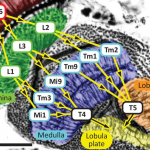How computational researchers can contribute to brain preservation research
It is sometimes claimed that it is impossible for people without strong wet-lab skills in biology and/or neuroscience to personally contribute to research associated with brain preservation. As this post will attempt to show, that is not the case! Specifically, here are three ways that purely computational researchers could help from a research perspective. This is not to mention the meta-research or advocacy perspectives, which would also be very helpful.
1) Molecular dynamics simulations of cryo- and chemical-preservation of brain tissue. Simulating the phase changes from aqueous to a frozen and/or glass state, given various cooling rates as well as various stabilizing and protective agents, could prove quite valuable. Ideally, simulations could take this further and determine the effect on biological structures such as lipid membranes and proteins, as well as the reversibility of these procedures. These simulations have been done on a small scale in some publications, but they have not been applied to brain preservation protocols to my understanding. Key tools here involve molecular dynamics simulation software, such as Gromacs, which usually involve coding in C/C++/Python.
2) Serial section electron microscopy reconstruction and analysis techniques. In order to make sense of the vast web of neuropil, synapses, glial processes, and somata in the brain, a common tool of late has been serial section electron microscopy. This yields vast amounts of data (petabyte scale) that must then be analyzed computationally. For example, Sebastian Seung’s group analyzes serial EM data from the retina. This work requires a deep understanding of computational algorithms, data structures, and machine learning. As far as I have been able to tell, people writing these algorithms often use C++.
3) Personal electronic emergency response systems. A well-functioning personal electronic response system that can alert emergency responders if a patient has a heart attack or stroke would be a crucial component of ideal brain preservation protocols. Currently, a large number of people who have signed up for cryonics have exceptionally poor preservations [1] because they live alone and their legal death is not noticed by anyone for hours or even days. In fact, this is an unmet need in the medical community more generally. For example, it is very common for individuals to have strokes at night or while sleeping and not receive care for many hours. In neurology, the amount of time between a patient’s stroke event and their treatment is critical, because as the saying goes, “time is tissue.” With respect to brain preservation procedures, a key research question here whether is it is possible to create and optimize a system that leads to shorter intervals between legal death and initiation of care. Both the false positive and false negative rate of any such system needs to be low, which is clearly tricky.
There are also many other potential ways to contribute to research using computational skills, including retrospective clinical data analysis and genomics. If you’re interested in collaborating on one of these topics or any other related topic, please get in touch with the BPF.
[1]: That is, even conditioning on the probability of how much personal identity a particular brain preservation protocol may preserve in the ideal case, the probability of it working in such a sub-optimal case will be almost certainly be much lower.
Recent Posts









